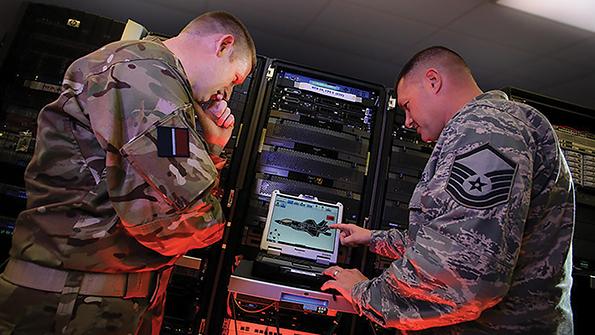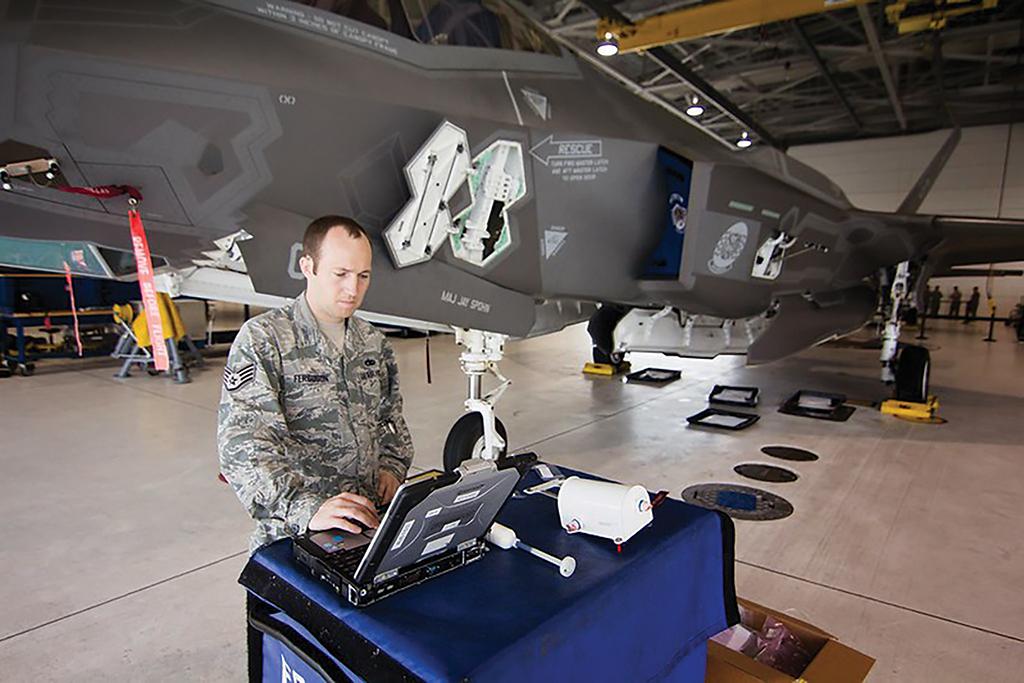
The Pentagon is in the early stages of replacing the troubled Lockheed Martin F-35’s autonomous logistics system with a new, cloud-based network, and hopes to get it up and running by the end of 2022.
The Operational Data Integrated Network (ODIN) is intended to reduce workload and increase F-35 mission readiness rates by using a smaller, deployable, commercial and cloud-native architecture. Right now, F-35 users operate the Autonomic Logistics Information System (ALIS) that collects inflight information for maintainers to predict part failures.
- New logistics system developers will listen to user input
- Lockheed Martin ousted from leading F-35 logistics project
However, the problem-plagued logistics system has encountered numerous issues that range from directing unnecessary maintenance actions, taking too long to boot up and time-consuming data entry. For example, users told the Government Accountability Office (GAO) that electronic records are frequently corrupt or missing, resulting in ALIS signaling the jet should not fly. This occurs in cases where maintainers know the aircraft is safe for flight. Maintainers at one location told the GAO they experienced as many as 400 issues per week for one six-month period in 2019.

The F-35 Joint Program Office (JPO) plans to begin installing hardware this September that can run software from both the legacy and new systems until ODIN is deployed fully. ODIN initial delivery is planned for September 2021.
ODIN hardware is designed to have a 75% smaller footprint than the legacy system, and be approximately 94% lighter—50 lb. compared with 891 lb. Another radical difference between the two systems is F-35 prime contractor Lockheed owns ALIS development and the new network is being developed by the JPO.
The JPO is using agile software development tools that allow rapid updates and improvements like how Apple updates its iPhones, while Lockheed employs waterfall development that allows for updates every 12-18 months.
In January, the JPO hit its first milestone by moving existing F-35 data into a new, integrated environment that will support applications designed by organizations such as Kessel Run, one of the Air Force’s software factories. Kessel Run formed a team called Mad Hatter and tasked it to build software applications to render F-35 logistics more user-friendly.
A key complaint about ALIS was the lack of realistic operational requirements. In other words, user needs can become outdated. To address this shortcoming, the JPO partner nations agreed in January to update a requirements document for ODIN annually—if needed. Instead of crafting a rigid requirements document that will be outdated in 10 years, the new strategy calls for updating protocols based on reality, according to a program office maintenance systems expert. This strategy complies with the software acquisition policy of Under Secretary of Defense for Acquisition and Sustainment Ellen Lord. It calls for the users, developers and software designers to come together and produce a customer-centric design as development progresses.
The requirements document features six capability needs: deployment planning and execution; unit maintenance planning; sortie generation; sustainment readiness; information management, and ODIN support. The document also includes 43 performance measurements that the JPO will use as metrics to track ODIN development.
Beyond better programmatic planning, the Pentagon is facing a considerable obstacle as it transitions from ALIS to ODIN. The JPO is having trouble receiving technical data from Lockheed, Lord told the House Committee on Oversight and Reform.
“While the department recognizes industry’s interest in protecting intellectual property, there is technical data that the department has rights to and needs in order to enable effective organic sustainment,” Lord noted in written testimony submitted to the committee.
In response to Lord’s comments, Lockheed noted the company does not own all the logistics system’s intellectual-property and data rights.
“ALIS software is also government-owned, per contract requirements with Lockheed, and our suppliers retaining intellectual property and data rights to portions of software that were developed using industry’s investment funds is in accordance with the Defense Federal Acquisition Regulations Supplement,” Lockheed spokesman Brett Ashworth tells Aviation Week.
The Pentagon’s overarching goal is to drive down F-35 sustainment pricing, which is where most of a program’s cost resides. The government is still upgrading ALIS, an effort known as ALIS Next, before ODIN comes online to manage costs.
ALIS Next consists of more regular software updates, instead of the program’s current 12-18 month cycle. An updated version of ALIS, known as 3.5, is outfitted with 300 stability fixes, says F-35 Program Executive Officer Lt. Gen. Eric Fick. Air Force software developers and Lockheed Martin personnel are simultaneously continuing to issue ALIS software patches. ALIS Next provides an opportunity to reduce the amount of administrative personnel needed to support the logistics system’s operations in the field.
An important step to lowering the overall F-35 sustainment price is reducing the cost per flying hour. The goal is for the F-35A conventional takeoff and landing jet, the most popular variant, was $25,000 by 2025.
“We are confident $25,000 is attainable, but it will require collaboration with the JPO, services, allies and our industry partners to reduce overall cost,” Lockheed F-35 Vice President and General Manager Greg Ulmer submitted in written testimony to the House Committee on Oversight and Reform.
Over the past five years, the company has reduced a portion of the F-35’s operations and sustainment costs by 38%. Lockheed is responsible for 39% of all F-35 sustainment costs, according to Ulmer.
The company estimates it will drive down controlled cost another 50% in the next five years, and it is working with the government to achieve similar savings on the remaining 61% of flight-hour costs that are under the purview of the Defense Department and propulsion suppliers.
Although in its infancy, ODIN is set to be the cornerstone for the next major wave of F-35 sustainment improvements over the next two years as ALIS is retired.






Comments